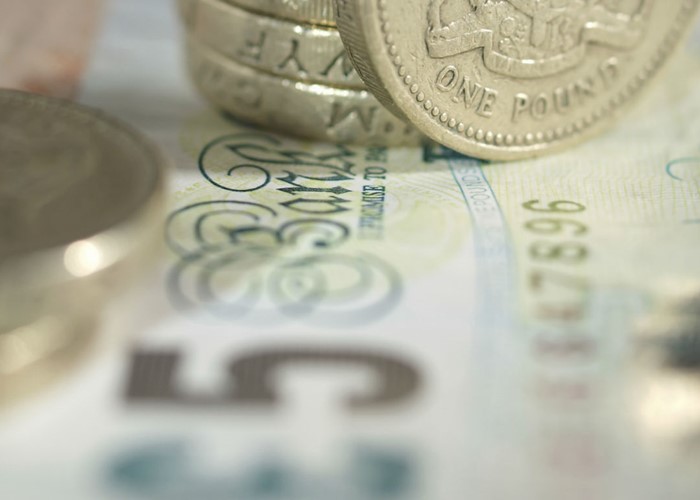Get zero bad debt on Zopa

Individuals lending on Zopa will now be protected from bad debts, and they can also now invest easily and automatically by tracking the best loan rates.
Zopa has introduced two new features for investors (or lenders lenders): a fund to pay for all bad debts so you don't have to, and a tracker that ensures your money is lent out more quickly.
These features will apply to all new loans made on Zopa.
Zopa's Safeguard
Zopa's Safeguard is a bad-debt fund very much like RateSetter's Provision Fund. Zopa pays part of the borrower's fee into Safeguard, which is set up as a not-for-profit trust that safely segregates the money from lenders, borrowers and Zopa itself.
If one of your borrowers now defaults, Zopa's Safeguard fund will reimburse you both your lost capital and interest. Zopa is optimistic that Safeguard will protect its lenders from all loss, but if far more loan payments are missed than expected, it will split the Safeguard fund fairly between investors, so that their losses are shared.
In the event there is nothing left in the pot, investors will take the full brunt of the bad debts, just like they used to previously.
This change should very slightly decrease the taxes that you have to pay. Previously, lenders couldn't offset their bad debts against their income. Now, they shouldn't have any bad debts to offset, just as with RateSetter.
Funny timing
It's interesting that Zopa has announced this now, just days after I wrote another article explaining that RateSetter's Provision Fund, while lowering risk, could eventually contribute to increasing risk in future. This is because it helps convince everyone there's no risk to worry about.
When everyone starts believing an investment is completely safe and totally risk free, they pile money in. It's what happened to mortgages. After decades of very conservative lending, bankers started asking themselves why they were being so conservative, since it was clearly so safe. Nothing had ever gone badly wrong on a big scale. They forgot that it was their cautious lending practices that made it safe.
So then they lowered rates, increased salary multiples, and eventually started lending to bankrupts with no money. It was far worse even in the US than here, and it's what caused a really terrible sub-prime market crash there. It's investors underestimating or under-appreciating risks on a large scale that causes bubbles and then crashes in all markets, on a recurring basis.
In the case of RateSetter, as belief widens that it's very risk free – or even completely risk free – loan prices will be beaten further down as more investors compete to lend their money out.
In the end, they will either be earning less than the risks involved (which could mean they're getting little more than they could get in savings accounts, for example) or RateSetter will have to loosen its lending criteria to attract more (higher risk) borrowers to handle the burgeoning investment money. Or investors will simply be left waiting for ages, earning nothing, because there are too many investors to borrowers.
By creating Safeguard, Zopa, which is already seen as pretty safe by many investment standards, could well now have increased the risk that people eventually forget about the risks.
The tracker
Zopa has also set up a tracker system that invests your money automatically when it is possible to do so. This means you don't have to keep manually adjusting the minimum rates you'll accept, which can lead to your money sitting uninvested for many days.
Zopa's tracker follows the best prime loan rates from the banks and building societies, and makes educated guesses about the best rates at less than A* level, in order to ensure that money being lent out on a given day tracks the best rates available.
Investors will still be competing with each other, which means that you can still expect rates to be forced lower the more money there is available to lend.
That's probably at least partly why, in addition to tracking high-street loans, there is a floor to the interest rate charged that is 1% above the average of savings rates you could earn across easy access and fixed-rate accounts on the high street.
Note that, by the time you're earning just 1% above the average savings account, you could well be better off getting a top savings account, rather than investing with Zopa.
What Zopa will do if and when that low rate is reached and then even more investors try to pile money in and compete with each other to lend their money out remains to be seen. But rates either have to be lowered further, investors are left with lots of uninvested money – or Zopa has to loosen its lending criteria to attract more borrowers.
For those of you with existing loans, here is some information about the cross-over period from non-Safeguard to Safeguard.
Still optimistic about peer-to-peer
The tone of this article is negative in parts, but I'm actually very much pro peer-to-peer lending. The interest you can earn through Zopa today is currently comparable to what you could have earned before Safeguard and the tracker came along. I'm just pointing out future risks more than anything.
So keep an eye on the interest rates, ensure you're getting a good return for the risks you're taking and that Zopa is not being lax on its credit controls, and you've got an excellent chance of doing well from it and its two new features.
During times when rates are too low – perhaps when you can get little more than with a similar savings account – bail out.
More on peer-to-peer lending:
Peer-to-peer investor returns fall to 5.1%
Peer-to-peer lending set to be regulated
Why I've started saving with RateSetter
What is peer-to-peer (P2P) lending?
Comments
Be the first to comment
Do you want to comment on this article? You need to be signed in for this feature